1,6-HEXANEDIAMINE DIHYDROCHLORIDE
Synonym(s):1,6-Hexanediamine dihydrochloride
- CAS NO.:6055-52-3
- Empirical Formula: C6H18Cl2N2
- Molecular Weight: 189.13
- MDL number: MFCD00012528
- EINECS: 227-977-8
- SAFETY DATA SHEET (SDS)
- Update Date: 2024-12-18 14:15:30

What is 1,6-HEXANEDIAMINE DIHYDROCHLORIDE?
Chemical properties
almost white crystalline powder
The Uses of 1,6-HEXANEDIAMINE DIHYDROCHLORIDE
An intermediate in the manufacturing of Nylon.
What are the applications of Application
Hexamethylenediamine dihydrochloride is on fusion of 1:6-di-(N3-cyano-N1-guanidino)-hexane yields polymeric diguanides
General Description
Toxicity of hexamethylenediamine dihydrochloride has been investigated. Hexamethylenediamine dihydrochloride is also known as 1,6-diaminohexane dihydrochloride, 1,6-hexamethylenediamine dihydrochloride, 1,6- hexylenediamine dihydrochloride or 1,6-diamino-n-hexane dihydrochloride. Hexamethylenediamine dihydrochloride on fusion of 1:6-di-(N3-cyano-N1-guanidino)-hexane yields polymeric diguanides.
Purification Methods
Crystallise the salt from water or EtOH. [Beilstein 4 IV 1320.]
Properties of 1,6-HEXANEDIAMINE DIHYDROCHLORIDE
| Melting point: | 256-257 °C(lit.) |
| storage temp. | Inert atmosphere,Room Temperature |
| solubility | water: freely soluble |
| form | Solid |
| color | White |
| PH | 2.5~6.0 (50g/l, 25℃) |
| Water Solubility | very faint turbidity |
| Merck | 14,4695 |
| CAS DataBase Reference | 6055-52-3(CAS DataBase Reference) |
| EPA Substance Registry System | 1,6-Hexanediamine dihydrochloride (6055-52-3) |
Safety information for 1,6-HEXANEDIAMINE DIHYDROCHLORIDE
| Signal word | Warning |
| Pictogram(s) |
 Exclamation Mark Irritant GHS07 |
| GHS Hazard Statements |
H315:Skin corrosion/irritation H319:Serious eye damage/eye irritation H335:Specific target organ toxicity, single exposure;Respiratory tract irritation |
| Precautionary Statement Codes |
P261:Avoid breathing dust/fume/gas/mist/vapours/spray. P264:Wash hands thoroughly after handling. P264:Wash skin thouroughly after handling. P271:Use only outdoors or in a well-ventilated area. P280:Wear protective gloves/protective clothing/eye protection/face protection. P302+P352:IF ON SKIN: wash with plenty of soap and water. P305+P351+P338:IF IN EYES: Rinse cautiously with water for several minutes. Remove contact lenses, if present and easy to do. Continuerinsing. |
Computed Descriptors for 1,6-HEXANEDIAMINE DIHYDROCHLORIDE
New Products
4-Fluorophenylacetic acid 4-Methylphenylacetic acid N-Boc-D-alaninol N-BOC-D/L-ALANINOL Tert-butyl bis(2-chloroethyl)carbamate 3-Morpholino-1-(4-nitrophenyl)-5,6-dihydropyridin- 2(1H)-one Furan-2,5-Dicarboxylic Acid Tropic acid S-2-CHLORO PROPIONIC ACID ETHYL ISOCYANOACETATE 2-Bromo-1,3-Bis(Dimethylamino)Trimethinium Hexafluorophosphate (6-METHYL-[1,3]DITHIOLO[4,5-b]QUINOXALIN-2-ONE INDAZOLE-3-CARBOXYLIC ACID 4-IODO BENZOIC ACID (2-Hydroxyphenyl)acetonitrile 4-Bromopyrazole 5,6-Dimethoxyindanone 2-(Cyanocyclohexyl)acetic acid 4-methoxy-3,5-dinitropyridine 2-aminopropyl benzoate hydrochloride 1-(4-(aminomethyl)benzyl)urea hydrochloride diethyl 2-(2-((tertbutoxycarbonyl)amino) ethyl)malonate tert-butyl 4- (ureidomethyl)benzylcarbamate Ethyl-2-chloro((4-methoxyphenyl)hydrazono)acetateRelated products of tetrahydrofuran

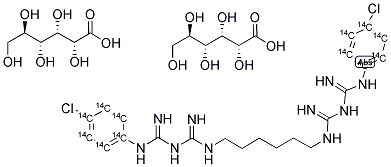


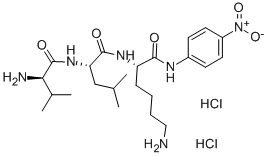
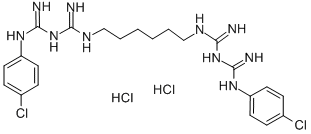
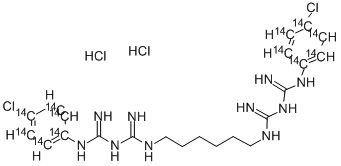
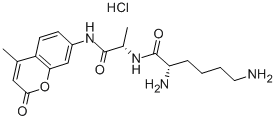
You may like
-
 1,6-Diaminohexane Dihydrochloride CAS 6055-52-3View Details
1,6-Diaminohexane Dihydrochloride CAS 6055-52-3View Details
6055-52-3 -
 Hexamethylenediamine dihydrochloride CAS 6055-52-3View Details
Hexamethylenediamine dihydrochloride CAS 6055-52-3View Details
6055-52-3 -
 1975-50-4 98%View Details
1975-50-4 98%View Details
1975-50-4 -
 2-HYDROXY BENZYL ALCOHOL 98%View Details
2-HYDROXY BENZYL ALCOHOL 98%View Details
90-01-7 -
 2-Chloro-1,3-Bis(Dimethylamino)Trimethinium Hexafluorophosphate 221615-75-4 98%View Details
2-Chloro-1,3-Bis(Dimethylamino)Trimethinium Hexafluorophosphate 221615-75-4 98%View Details
221615-75-4 -
 61397-56-6 CIS BROMO BENZOATE 98%View Details
61397-56-6 CIS BROMO BENZOATE 98%View Details
61397-56-6 -
 14714-50-2 (2-Hydroxyphenyl)acetonitrile 98+View Details
14714-50-2 (2-Hydroxyphenyl)acetonitrile 98+View Details
14714-50-2 -
 118753-70-1 98+View Details
118753-70-1 98+View Details
118753-70-1
Statement: All products displayed on this website are only used for non medical purposes such as industrial applications or scientific research, and cannot be used for clinical diagnosis or treatment of humans or animals. They are not medicinal or edible.